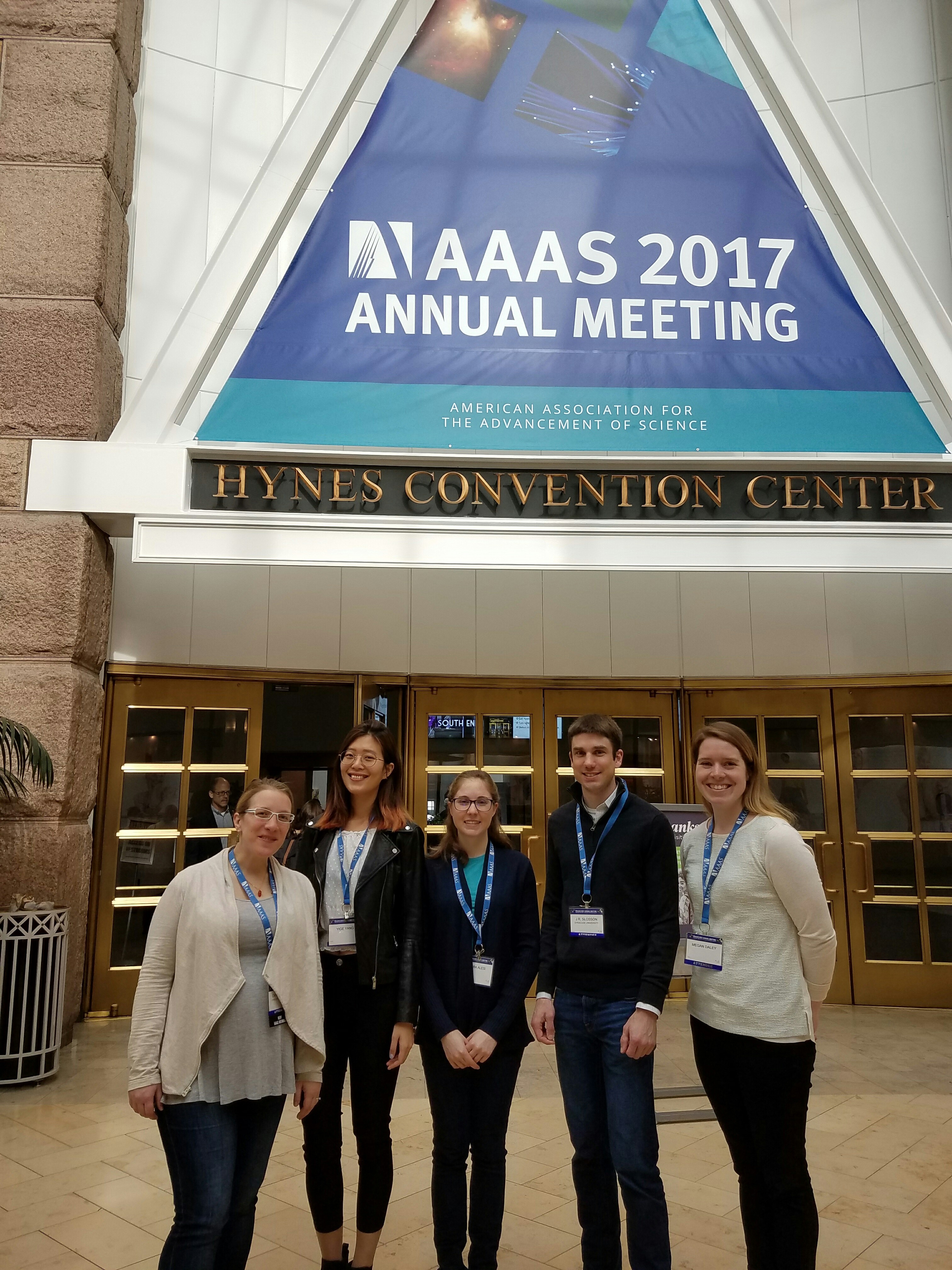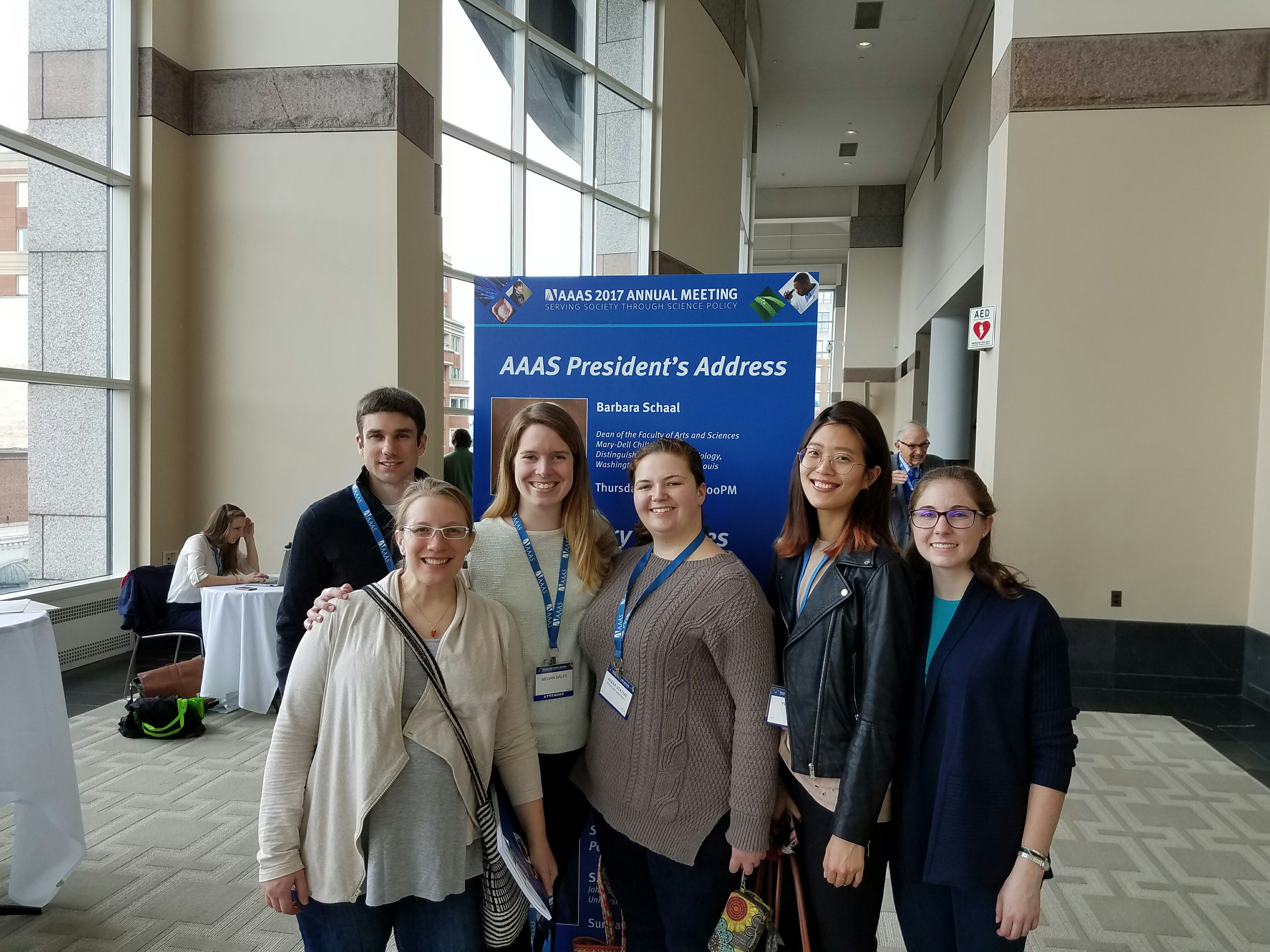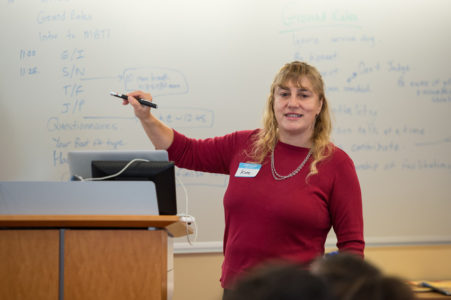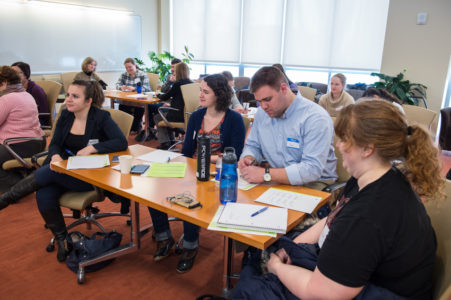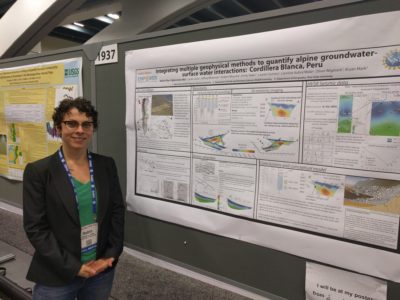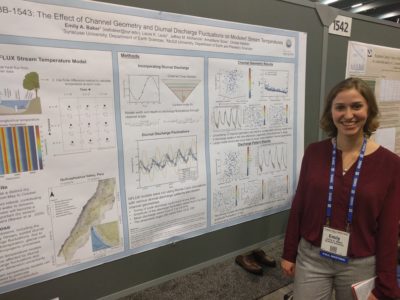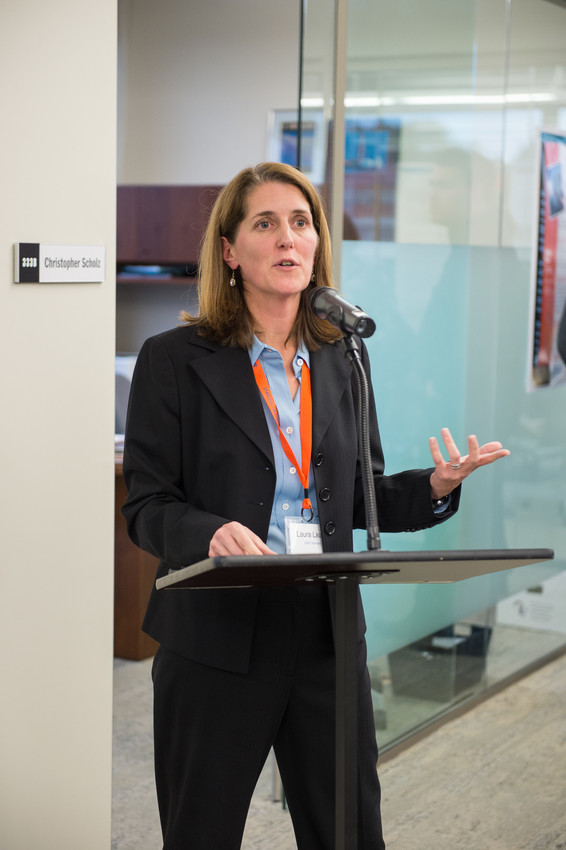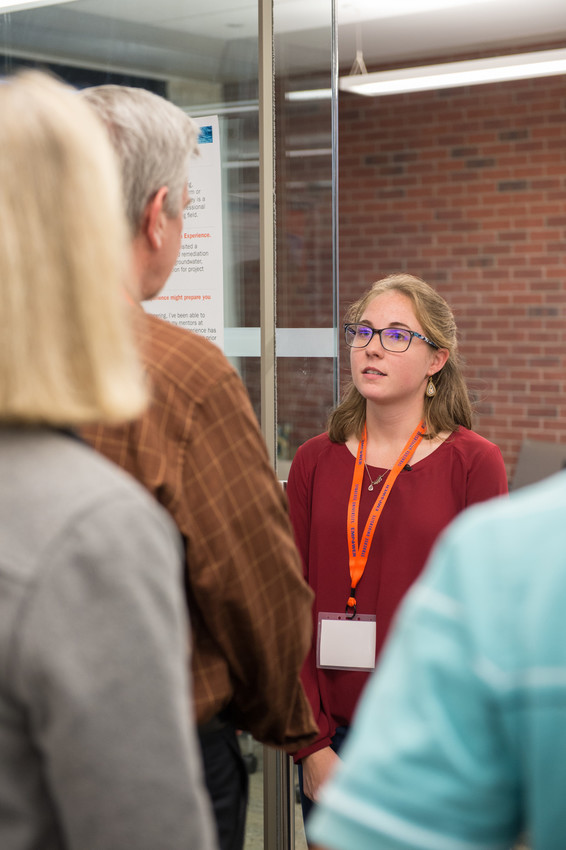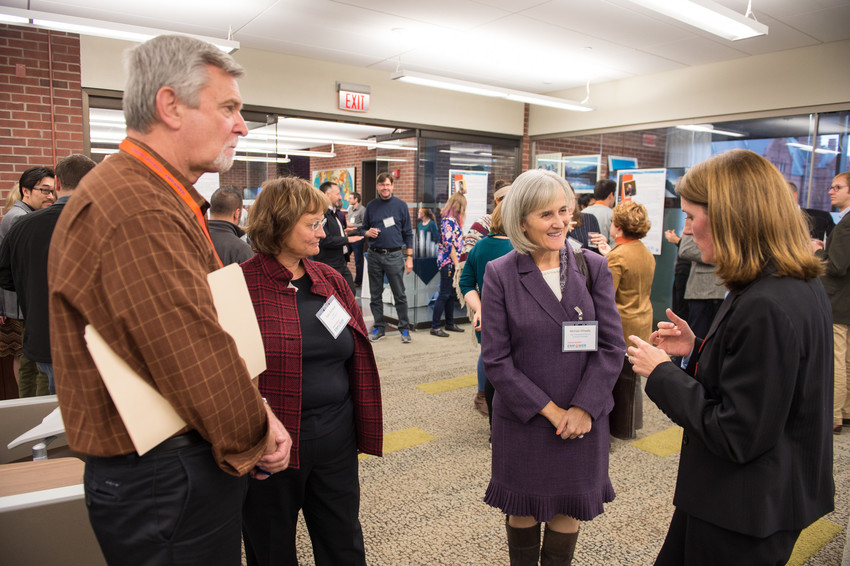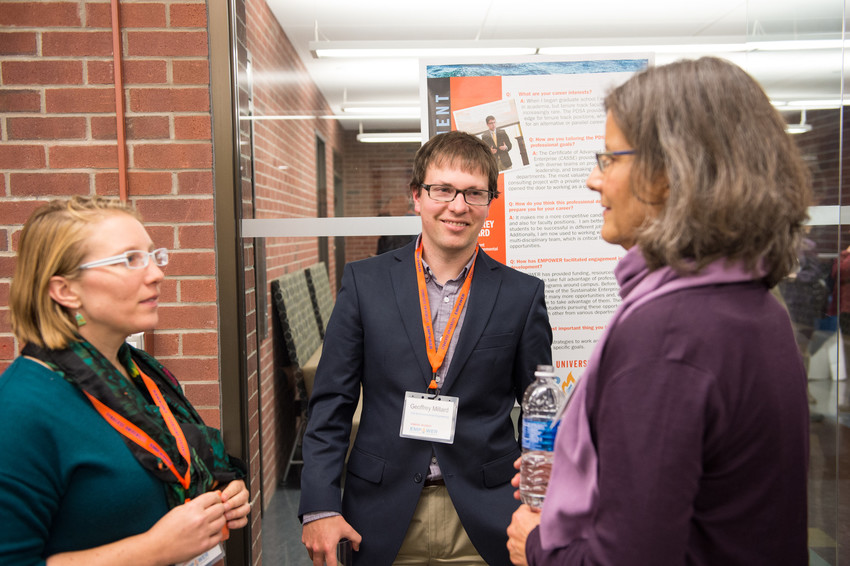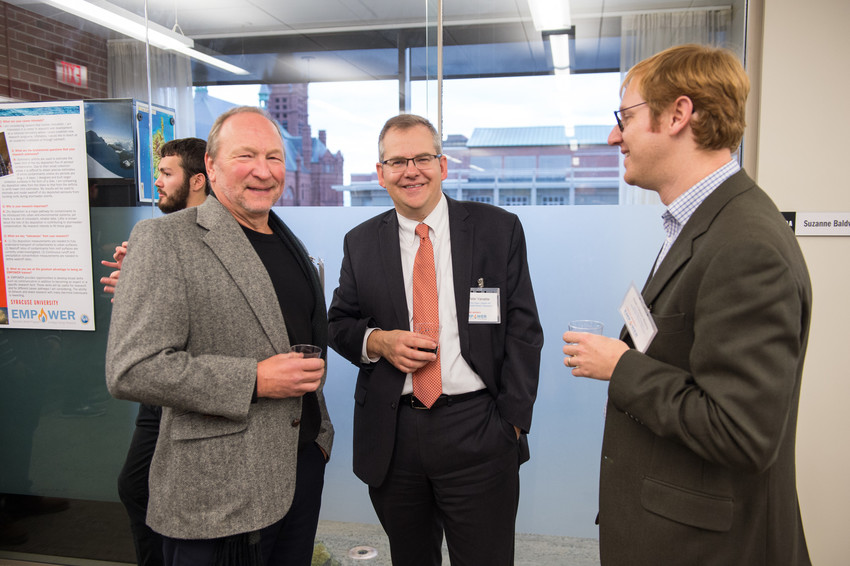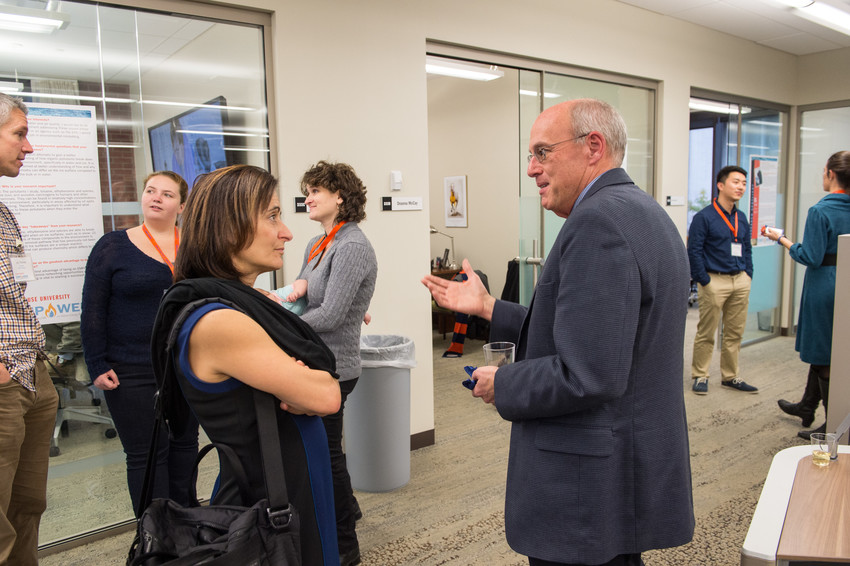Have you ever wanted to travel back to a time before humans roamed the planet, when strange plants and organisms populated the land and seas? While time travel is not possible, unique systems exist on Earth today that can provide us with a glimpse into the past. One such time-warping ecosystem exists in Fayetteville Green Lake, one of two fascinating meromictic lakes located in Green Lakes State Park, near Manlius, NY. The term “meromictic” refers to lakes in which the water separates into layers with distinct physical and chemical properties due to a lack of turnover (physical mixing of lake waters) between deep lake water and surface waters. Green Lake is meromictic due to the highly saline groundwater that flows into it at depth, preventing the lake from overturning due to density differences between heavy, saline bottom waters and light, fresh top waters. Meromictic lakes like Green Lake are extremely rare (less than 1/1000 lakes in the world!). The unique water chemistry that results from the distinct layers of lake water is thought to be similar to those of ancient oceans, making Green Lake the perfect place to investigate questions about ancient marine systems, including: 1) the potential causes of the Permian–Triassic extinction event; 2) how methane and oil bearing deposits form; and 3) the microbiology of extreme ecosystems (high sulfide, low oxygen). The EMPOWER group discussed the unique conditions found in Green Lake, including the purple sulfur bacteria that are similar to those that lived millions of years ago and the chemistry profiles that reveal high sulfur and metal concentrations at depth.
This discussion was held in preparation for the program’s upcoming field course (August 2017) during which students will have the opportunity to study this intriguing lake. By studying unique lakes such as Green Lake, scientists can travel back in time to learn how the environment responded to different conditions, and potentially apply this knowledge to how aquatic environments might be affected as the climate changes in the future.
Story submitted by Emily Baker, Changcheng Pu, and Laura DeMott
